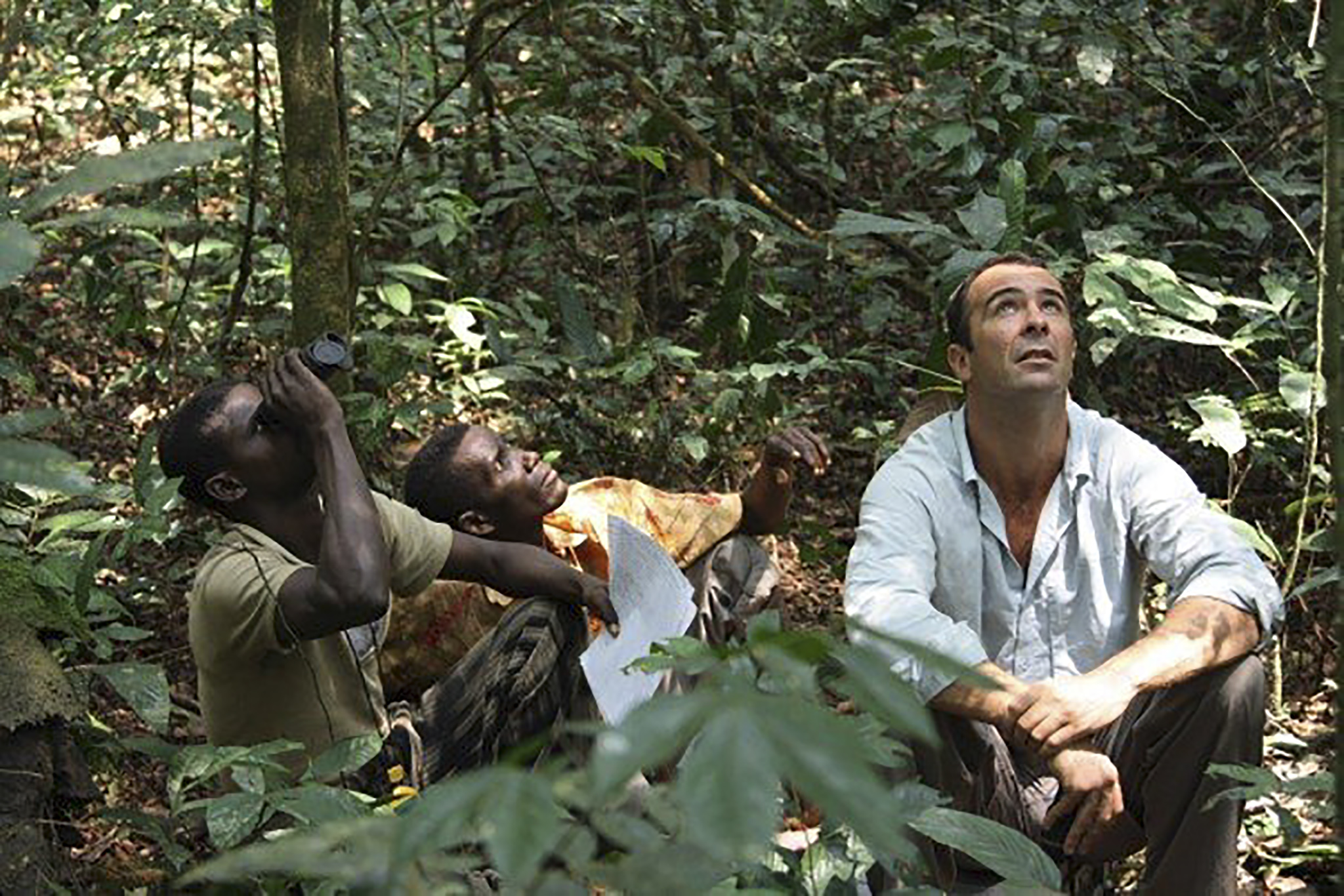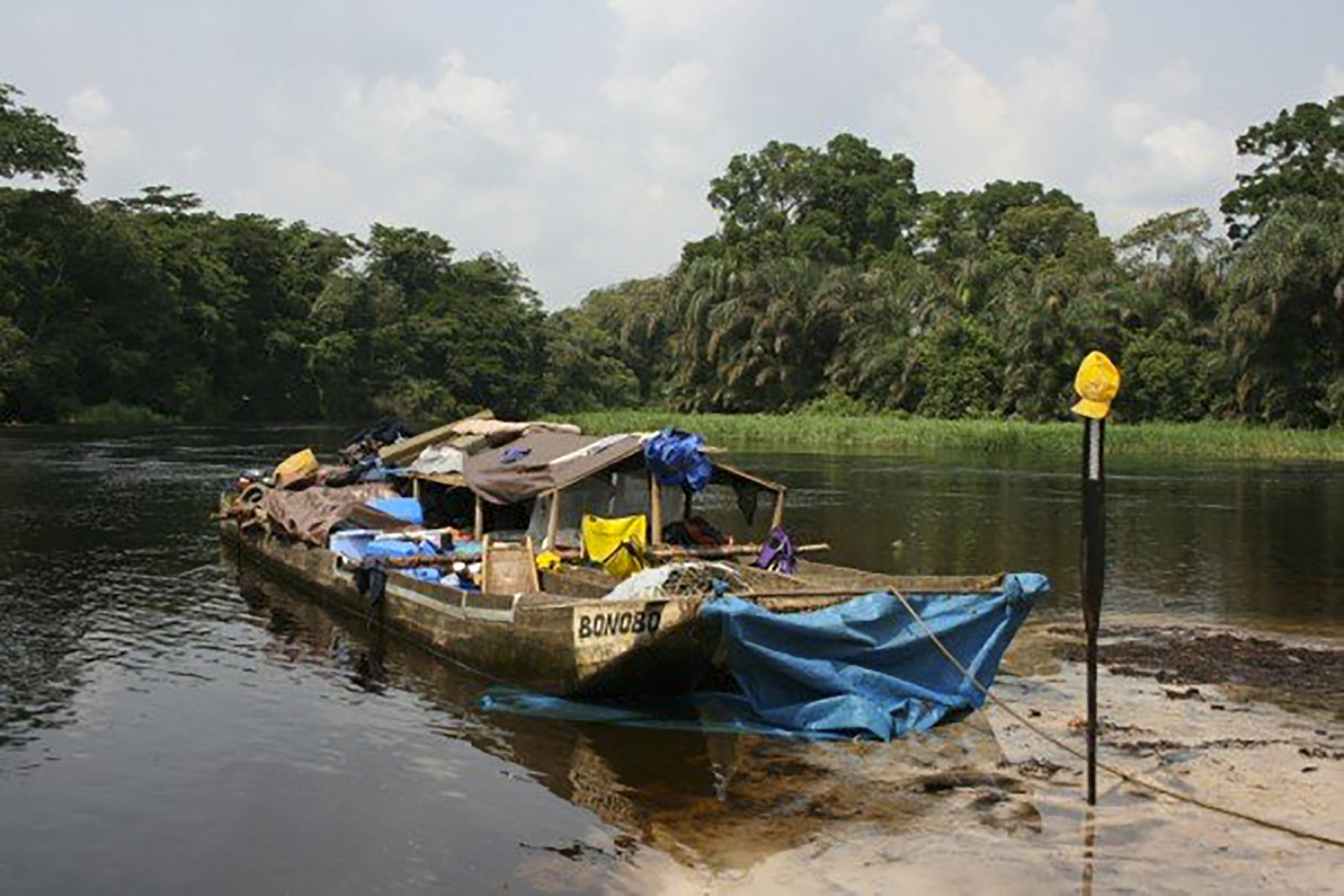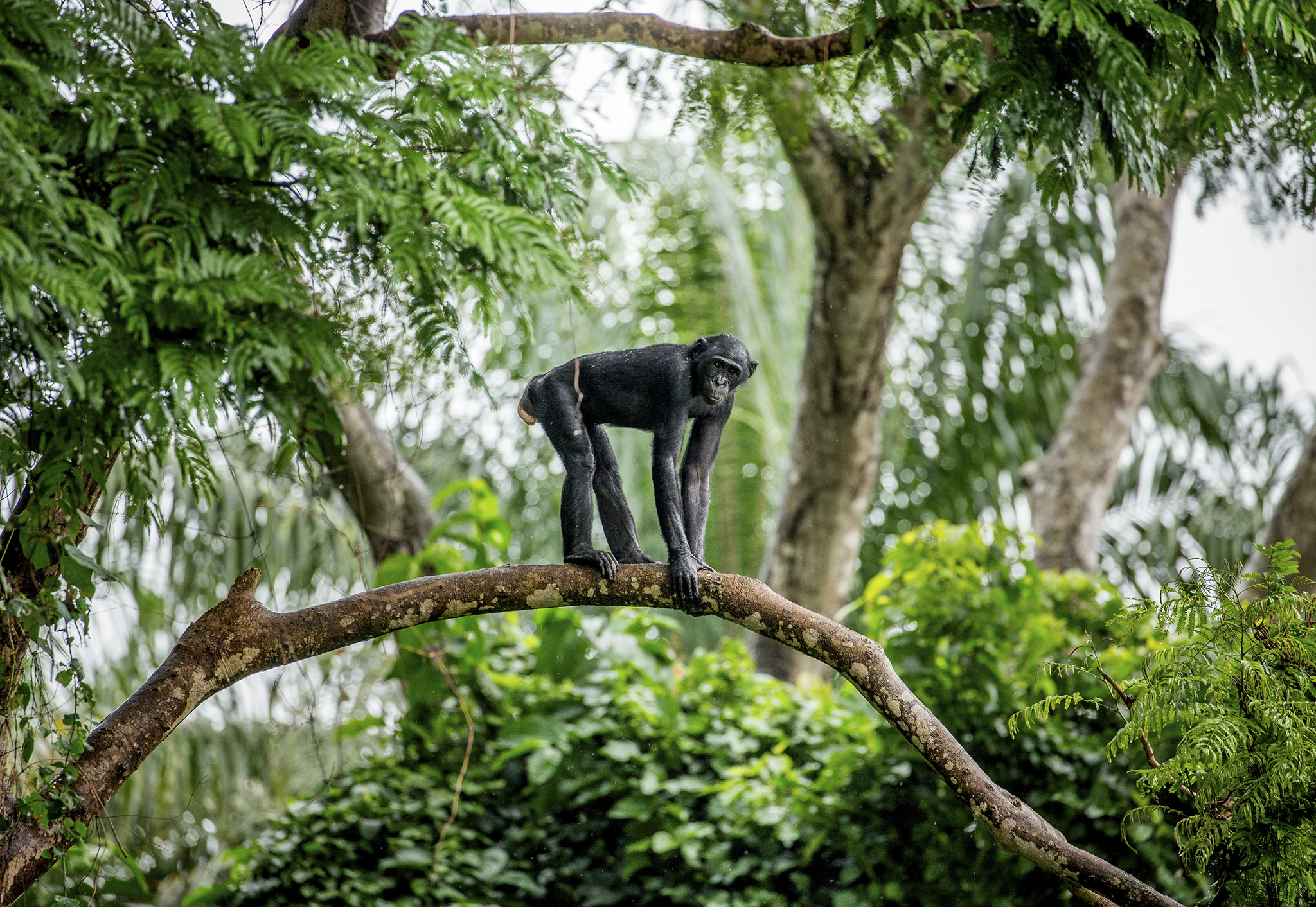The Bonobo ape is found in a 500 000 sq km area of the Congo basin, inhabiting primary and secondary forests. Photo: © Adobe Stock
Director of Bonobo Conservation Australia, Angus Gemmell, has had a fascination with our closest living relative, the bonobo ape, since the early nineties. Along with fellow primate enthusiasts Martin Bendeler, Luke Bennett, and Phil Strickland, Gemmell founded the Bonobo Conservation Initiative Australia to promote conservation of bonobo habitat by supporting local communities living in proximity to bonobos in the Democratic Republic of Congo.
After reading about the significance of bonobos in Australian biologist Jeremy Griffith’s book Beyond the Human Condition, adventurer and wilderness advocate Gemmell was inspired to learn more about the Great Apes. He spent time with chimpanzees in Kenya and Uganda, visited mountain gorillas in Uganda/ Congo, as well as spent time with pioneering bonobo research professor Dr. Takayoshi Kano, in Japan. In 2001 Gemmell spent several months working as Executive Director for the Bonobo Conservation Initiative in Washington DC.
Inspired by what he had learned and read, combined with a love of truly wild and remote places, Gemmell fulfilled his long-held ambition to travel up the mighty Congo River in the Democratic Republic of Congo (DRC). His destination, BCI’s (Bonobos Conservation Innitiative’s) Research Center in a region known as Kokolopori, to track and film the rare and endangered bonobo.

The Congo river is the second longest river in Africa, shorter only than the Nile. Photo: © Angus Gemmell
The bonobo, or pygmy chimp as it was historically known, shares 98.7% of our DNA, but as it lives so remotely, it is rarely seen. It is an endangered species threatened by poaching (for bushmeat), residue from civil warfare, habitat destruction caused by humans (logging and agriculture), human population growth and lack of education. In addition, bonobos are slow reproducers which puts populations under increasing pressure.
WildArk caught up with Gemmell to find out more about the Bonobo Conservation Initiative and his journey into the DRC.
WildArk: How did your fascination with bonobos come about?
Like most people, I had never heard of them until I came across the book Beyond The Human Condition. The book presents some ideas contrasting chimpanzees with bonobos. ‘Chimps’ are renowned for their volatile temperament – they can be quite inhibited and shy, yet bold and aggressive tending towards patriarchal dominance. In contrast, bonobos present a very different model of human origins. They share territory and food, they are gregarious and matriarchal, and I was staggered that I had never heard of them before!
WildArk: How would you describe the Congo to someone who has never been there?
The Congo is a land of stark contrasts. You’ve got the human experience swings broadly between the grubby sprawl of desperation and poverty of Kinshasa and the tribal villages in the depths of the rainforest – more peaceful and less influenced by militia.

Angus Gemmell sits on the forest floor with local trackers, observing bonobos in the forest canopy in the DRC. Photo: © Angus Gemmell
WildArk: What did it feel like to travel by boat in the Congo?
The journey felt like going down a time tunnel to the dawn of humanity. Metaphorically you felt like were are going back in time to where the bonobos are at the dawn of human consciousness.
Our boat was 15-20 meters long and comprised of just 3-4 logs lashed together, and it was not very manoeuverable. There were times when trying to navigate log jams in the narrower stretches was quite dangerous, and there were a couple of occasions when we nearly got stuck on some awkward spots.
WildArk: Are the Congolese good watermen/ women?
Yes, they have used rivers as their natural highways for centuries. Thankfully, the road structure is so poor that the logging trucks can’t get in and out very quickly, limiting deforestation. The Congolese take their small canoes fishing through the depths of the forest, and they have these huge floating groups of boats like a flotilla, or colourful floating market, moving up and down the river
WildArk: Few westerners have been here, did this add to the thrill of the adventure?
Yes, absolutely because it had been some time since ‘mzungus’ (white men) had been up there. In the aftermath of Rwanda’s genocide, the Hutus spilled across into the DRC destabilising Eastern Congo. That wave of unrest moved west to Kinshasa resulting in the over-throw of President Mobutu Sese Seko. It is still a fairly volatile place and there were a few times we felt we were in danger. Once, we were in a market and became surrounded by a gang that seemed ready to linch us. Thankfully some undercover policemen sensed the imminent danger and stepped in!
WildArk: What was it like to see bonobos in the wild for the first time?
I can still see them in my mind’s-eye, high in the canopy. We had just trekked through the forest pre-dawn. For 15 years, I had dreamt about being there in the wild, and I think the feeling I had was one of majestic wonder. They had this timelessness about them, and it was a curious feeling that, as much as we were looking through our binoculars at them, we were objects of their curiosity too. It was a feeling of being studied by another conscious being right on the cusp of a heightened consciousness, similar to that of humans.

Gemmell travelled by boat up the mighty Congo river, a journey of 1500km. Photo: © Angus Gemmell
WildArk: Did you have any particularly close encounters?
There was one time we were sitting down quietly for a lunch break, and we heard movement. No more than 7 meters away, a bonobo had come down quietly from the canopy and was standing on two legs and walking calmly in the waist-high undergrowth. You could see its bipedal form looking back over its shoulder at us while walking away (on two legs). The bipedal form is very startling because of the association with early humans. Bonobos are arboreal but frequently walk upright when on the forest floor. There is an interesting theory that one of the reasons humans walk upright is that we wanted to carry our young for more extended periods.
WildArk: What qualities do you admire most in bonobos?
I admire their co-operative behaviour the most, that’s what sets them apart from chimpanzees.Chimpanzees can display co-operative behaviour within their group, but peaceful coexistence with others outside their group is something you almost never see in chimps but can regularly witness between bonobo troops. Bonobos use playfulness and sensual pleasure to bind themselves as a group and relieve tensions, avoiding conflict before it arises.
WildArk: How do the local people view this species?
In some tribes it is taboo to hunt bonobos, as traditionally as they are seen as brethren. This prohibition can be diluted by exposure to the militias, which hunt bonobos for bush meat. They have been known to go into a forest, find a troop up in the canopy and blow machine guns bullets until they all drop. But, that’s not a traditional village approach. Most of the traditional villages live in harmony with the bonobo species.

